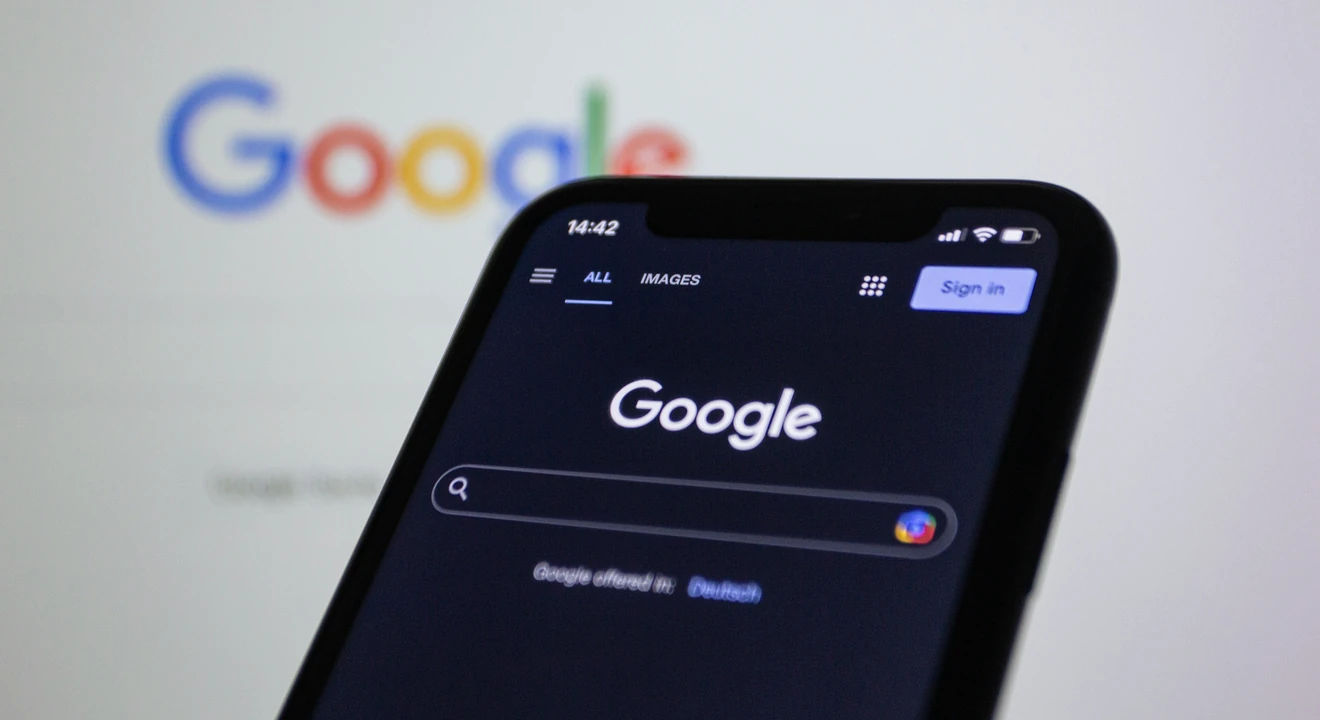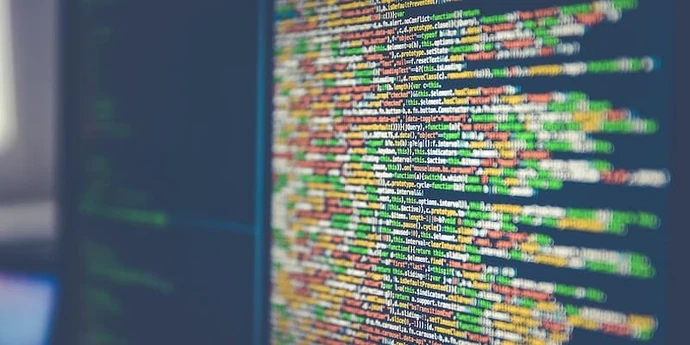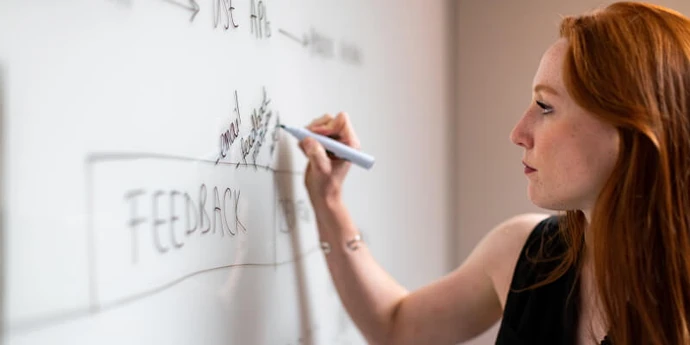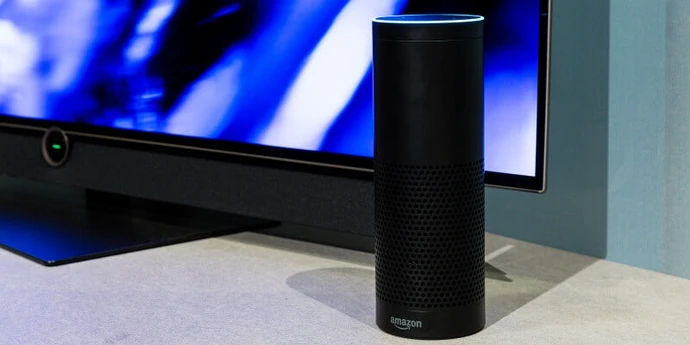No matter what role you're applying for, Google interview questions are tough. To get the job, your answers will need to be outstanding.
If that sounds daunting, don't worry! We're here to help. We've helped thousands of candidates get jobs at Google and we know exactly what sort of questions you can expect in your interview.
Below, we'll go through the most common Google interview questions and show how you can best answer each one.
- Top 5 Google interview questions
- More Google interview questions
- How to prepare for a Google interview
- Google interview FAQs
- Practice strategy
Click here to practice mock interviews with ex-Google interview coaches
1. Top 5 Google Interview Questions↑
We host 170+ Google interview coaches on our platform. They have helped hundreds of candidates get job offers at Google through our coaching services.
Based on these successful candidates’ stories, self-studying interview questions before a session with an expert is an essential part of the interview practice. Doing this helps you identify your blind spots, which you could bring up with your coach during your session.
To help you with this, we’ve gathered the 5 example questions that are typical for Google interviews. We’ll show you why interviewers ask them and how to answer them, with an example answer for each question.
1.1 Why do you want to work at Google?
You can expect to be asked this question at least once in your Google interviews. Interviewers want to know that you’ve got the right motivations for joining the company, and you’re not just in it for the prestige or the money.
Aim to give two or three compelling and specific reasons. Do your research so that you can talk about things that attract you to the company.
It would be great if you can show that you’ve spoken to Googlers about why they enjoy working there, so try and do some networking if possible.
How to answer this question
When answering this question, avoid giving unstructured, too broad, and too long answers. To prepare well, we recommend that you do these:
- Network: Long before your interview, connect and build rapport with current Google employees. Ask them what it’s like working there, why they chose Google, and what is unique about it. Their answers will give you ideas for your own answer. Also, mentioning their names during your interview shows the interviewer that you’ve put in extra effort to get to know their company better.
- Personalize: Surely you’ve had personal experience with Google, so feel free to talk about it. How has Google affected your day-to-day and changed your life for the better? Also talk about what you value most about Google and at least one of its products.
- Bring your unique perspective: Instead of looking for a traditional culture fit, Google interviewers are on the lookout for “culture add”, i.e., “Will this candidate bring attitudes and character traits that will be a positive addition to Google’s working culture?” Find a way to merge your unique background and perspective with Google’s mission in crafting your answer.
- Make it specific: Your answer should apply only to Google and not any other company. If your answer can easily be used for other companies by just swapping the company names, that means it’s still too broad and you need to keep working.
- Give more than one reason: Aim for two to three concise reasons related not only to Google but also to your possible position and team in the company. More than these would make your answer too long; giving only one reason is not a strong enough answer.
- Talk about your team: Some of the reasons you may want to work for Google as a whole need to be specific. Talk about the team and the role that you’re applying for, and why they’re a perfect fit for you.
- Keep it sincere and balanced: While you want to show enthusiasm for working with Google, give real reasons and not offer empty compliments.
Let’s see what a good answer looks like:
Example answer:
“I want to work at Google for three reasons.
First, I'm excited to join Google because of its deep technical culture. I loved my PhD in Computer Science and for me, programming is a hobby, not just a job. I know that by joining the company, I'll be working with colleagues who are as excited as I am about advanced technology.
Second, I'm attracted to Google because of its spirit of innovation, exemplified by the famous 20% policy—whether or not that policy is still a hard and fast rule at the company today. Being creative and pursuing novel opportunities is what inspired me to organize a coders club and internal innovation events in my previous position, which ended up reducing turnover in my team by 15%. It sounds like Google is a place that encourages special projects like these.
Finally, I studied with Anika Kumar and Aaron Fox, who were part of the same PhD program and now work at Google. Both of them are enjoying their time here and encouraged me to apply to join the team.”
For a more detailed look at how to ace this crucial question, check out our “How to answer "Why Google?" interview question” guide (written for PMs but relevant to all roles).
1.2 Tell me about a time you failed at work
Even Google execs make mistakes. In fact, they make lots of mistakes, as you can see from this graveyard of discontinued Google products!
This question is one of the most common questions you’ll encounter during the behavioral section of your GCA (general cognitive ability) interview at Google.
It’s meant to assess you on your Googleyness attributes, in particular: your ability to adapt and learn from challenging situations, and taking ownership.
You could also take this question as an opportunity to demonstrate your humility, bias for action, and having high standards and going for moonshots, if applicable.
The key to acing this behavioral question is to show that you’re someone who acts on your ideas and takes calculated risks, owns your mistakes, and sees failure as a learning opportunity. So use a real failure, be honest about what went wrong, and tell them what you learned.
You’ll encounter many interview questions that assess your Googleyness. So to prepare, Yu-Sheng advises that you list as many past experiences as possible.
Try to look for instances in your past show your alignment with Google’s culture and values. And never make up stories, unless of course, you’re asked hypothetical questions.
How to answer this question
We’ve developed the SPSIL framework to answer behavioral questions like this. The approach has five steps:
- Situation: Start by giving the necessary context of the situation you were in. Describe your role, the team, the organization, the market, etc. You should only give the minimum context needed for the interviewer to understand the problem and the solution in your story. Nothing more.
- Problem: Outline the problem you and your team were facing.
- Solution: Explain the solution you came up with to solve the problem. Step through how you went about implementing your solution, and focus on your contribution over what the team / larger organization did.
- Impact: Summarize the positive results you achieved for your team, department, and organization. As much as possible, quantify the impact.
- Lessons: For this question, the lessons part is the most important, and has the benefit of enabling you to conclude on a positive note.
To get a better idea of how our method works, work through the example below.
Example answer:
Situation
“About 6 months ago I was working on a project where I had to implement a new online booking feature for a client. I had a tight deadline and was working under pressure to get it done. I was in such a hurry that I didn’t take as much time as I normally do to check my code for bugs.
Problem
Unfortunately, it did have a bug and it caused a lot of follow-on problems on the client’s website.
Solution
I tried to solve it but I quickly started to feel a bit out of my depth, so I decided to ask for help from my manager as well as team member who had a lot more experience than me. We worked together to identify the root cause of the issue, and we came up with a plan of action.
We had a very frank meeting with the client where we laid out the extent of the problem and the steps we were going to take to fix it.
Impact
We had to work some long hours to get everything fixed, but in the end, we were successful. We missed the deadline, but not by too much, and our relationship with the client actually improved in the long-term as they saw how committed we were to fixing the problem, and that we had been transparent with them.
Lessons
I learned three things through this experience. One, don’t skip on testing code properly or you’ll pay for it later on. Two, it’s important to always be transparent and honest, in this case both with my manager and then with the client. And three, I learned that when you have to tell someone that something has gone wrong, it’s a lot better if you can also explain what you’re going to do to solve the problem.”
Get more tips on answering this common question in our guide: 5 ways to answer ‘Tell me about a time you failed’ interview question.
1.3 What is your favorite Google product?
Googlers are passionate about their products and interviewers want to see that you share this passion. Of course, they’ll also want to see that a) you are able to understand what makes a good product and b) your communication skills are good enough to explain your reasoning.
It doesn’t really matter which product you pick, the key is giving some good reasons as to why, and structuring your argument properly.
Engineering candidates often get asked this as a kind of warm-up question in a technical interview (PMs are also asked this but will need to give a more in-depth answer).
Let’s see an example.
Example answer
“As a software engineer, one of my favorite Google products is Google Kubernetes Engine (GKE). I started using it a year ago in my current role, and I absolutely love using it.
It allows me to have a really high level of control and I’ve been learning how to take advantage of the very advanced configuration options. I particularly like the deployment options it offers such as the rolling updates, blue-green deployments, canary releases.
I’ve also found that the integration with Cloud Storage, Cloud SQL, and Cloud Pub/Sub is really smooth.
So yes, I love using GKE and I think it’s fantastic that Google provides this kind of infrastructure because it makes it much more accessible for small businesses to launch apps. I’d love to work on making something like this myself.”
If you’re applying for a PM role, you can find a more detailed answer framework in our guide on how to answer the ‘What’s your favorite product?’ question.
1.4 Given a binary tree, find the maximum path sum. The path may start and end at any node in the tree.
Google software engineer candidates can expect questions on common data structures and algorithms, including graphs, arrays, strings, dynamic programming, recursion, and more.
When answering coding problems, Yu-Sheng (Waymo/Google software engineer) says that you should always think out loud, especially if you’re feeling stuck or unsure. Your interviewer could then give you hints or point you in the right direction.
He also advises that you write code in a top-down fashion: “This means you can make calls to non-existent functions and fill in the details later, to maximize your chance of completing the main scaffolding.”
To stand out, Yu-Sheng says, “Try to pretend that the interviewer is your colleague.” Treat the interview as if it were a conversation with a teammate, and focus on highlighting your Googleyness, in particular your communication and collaboration skills. This advice applies to both your technical and non-technical interviews.
How to answer this question
We've developed a coding interview framework to answer this question well. It only takes four steps:
- Clarify. Understand the question. Ask clarifying questions. Specify assumptions.
- Plan. Find a solution and explain your solution.
- Implement. Optimize the solution, then write the code.
- Test and optimize. Test-run your code, then optimize.
Let's look at an example answer.
Example answer:
“To find the maximum path sum in a binary tree, we can use a recursive algorithm that traverses the tree and keeps track of the maximum path sum found so far. At each node, we can calculate the maximum path sum that includes the current node by adding the value of the node to the maximum of the maximum path sum from the left subtree and the maximum path sum from the right subtree. We can then update the global maximum path sum if the maximum path sum that includes the current node is greater than the current global maximum.
Here's the Python code for the algorithm:
The algorithm uses a nested function dfs to perform a depth-first search traversal of the binary tree. At each node, dfs returns the maximum path sum that includes the current node and at most one of its subtrees. The max function with the arguments 0 and the recursive call to dfs ensures that negative sums from a subtree are ignored.
The curr_path_sum variable calculates the maximum path sum that includes the current node, its left subtree, and its right subtree. We update self.max_path_sum if curr_path_sum is greater than the current maximum path sum. Finally, dfs returns the maximum path sum that includes the current node and at most one of its subtrees to the parent caller.
To call the function, we can create a TreeNode object to represent the root of the binary tree and pass it to the maxPathSum method of a Solution object:
In this example, the maximum path sum in the binary tree with root node 1, left child 2, and right child 3 is 6, which corresponds to the path 2 -> 1 -> 3.”
You'll need to work through lots of coding problems before your interview. We recommend starting your prep by going through our Google coding interview guide.
1.5 Tell me about a time you dealt with conflict
Google interviewers often ask questions about conflict, especially in management position interviews. They want to know that you’d be able to effectively manage the conflicts that inevitably arise when people are solving complex problems and working under pressure.
For this, we recommend using the SPSIL framework we discussed in the question above. Let’s take a look at how you can structure an answer to this question using that framework.
Example answer:
Situation
“In my past job, when I first joined I was very eager and frequently jumped in with ideas and volunteered to lend a hand in many tasks.
Problem
I began to notice in our team meetings that one of my coworkers began cutting me off when I presented ideas. Later, when I volunteered to help with a task that concerned his functional area, he neglected to give me the information and resources I needed.
Solution
To solve this, my first step was to examine my own behavior to understand how it may have sparked the conflict. I determined that my eagerness to contribute to the discussions and project may have overstepped some bounds.
My next step was to meet with my coworker. I politely expressed how his behavior was preventing me from speaking up in meetings and helping with important tasks, then asked if I had overstepped any boundaries. He agreed, explaining that I had taken up too much time in the meetings, giving him and others less of an opportunity to present their teams’ work.
First, I apologized for my initial behavior and promised I would be more attentive to the time I spent speaking in meetings and would only volunteer for tasks when I was confident I was well equipped to contribute. In exchange, I requested that he approach me in case further issues arise, instead of closing me off from discussions or projects. He agreed.
Impact
We each adjusted our behavior and avoided further conflict while working together.
Lessons
This experience taught me to be much more receptive to coworkers’ feedback and work to keep my contributions quick and to the point in meetings. Also, it taught me to address issues as soon as they arise, as we were able to move on from that conflict very quickly instead of allowing it to grow into a larger problem.”
Learn more about how to ace this question by using our guide: 5 ways to answer "Tell me about a time you had a conflict".
2. More Google interview questions↑
Here at IGotAnOffer, we believe in data-driven interview preparation.
We've analyzed over a hundred software engineer interview questions reported by Google candidates on Glassdoor, to identify the types of questions that are most frequently asked.
These are coding, system design, and Googleyness/behavioral types of questions.
Let’s look at the examples.
2.1 Google coding interview questions
If you’re applying for an engineering role, you can expect multiple coding problems during your interview.
Google is an engineering-led company, so for you to get an offer, you’ll need to demonstrate strong problem-solving skills. You also want to show that you think in a structured way and write code that's accurate, bug-free, and fast.
Let’s take a look at some examples.
Example coding interview questions at Google
- Given an encoded string, return its decoded string. (Solution)
- Implement a SnapshotArray that supports pre-defined interfaces (note: see link for more details). (Solution)
- Given two words (beginWord and endWord), and a dictionary's word list, find the length of shortest transformation sequence from beginWord to endWord, such that: 1) Only one letter can be changed at a time and, 2) Each transformed word must exist in the word list. (Solution)
- Given a matrix of N rows and M columns. From m[i][j], we can move to m[i+1][j], if m[i+1][j] > m[i][j], or can move to m[i][j+1] if m[i][j+1] > m[i][j]. The task is print longest path length if we start from (0, 0). (Solution)
- Given a robot cleaner in a room modeled as a grid. Each cell in the grid can be empty or blocked. The robot cleaner with 4 given APIs can move forward, turn left or turn right. Each turn it made is 90 degrees. When it tries to move into a blocked cell, its bumper sensor detects the obstacle and it stays on the current cell. Design an algorithm to clean the entire room using only the 4 given APIs shown below. (Solution)
- Implement a SnapshotArray that supports pre-defined interfaces (note: see link for more details). (Solution)
- In a row of dominoes, A[i] and B[i] represent the top and bottom halves of the i-th domino. (A domino is a tile with two numbers from 1 to 6 - one on each half of the tile.) We may rotate the i-th domino, so that A[i] and B[i] swap values. Return the minimum number of rotations so that all the values in A are the same, or all the values in B are the same. If it cannot be done, return -1. (Solution)
Click here to learn more about Google coding interview questions.
Note: If you’re interviewing for an engineering manager role, add our Google code review guide to your prep materials.
2.2 Google system design interview questions
Google Search, Gmail, Google Docs, Android, and YouTube all have 1bn+ monthly active users. Google engineers therefore need to be able to design systems that are highly scalable and performant.
You’ll usually get one system design interview round. But in some cases (i.e. managerial, security or infrastructure roles), you might encounter more than one SD round.
Unlike coding interviews, system design interviews are more open-ended. It’s an opportunity for you to show that you can be creative and structured at the same time. In most cases, your interviewer will adapt the question to your background.
Let’s see some examples.
Example system design interview questions at Google
- How would you design Google's database for web indexing? (Solution)
- How would you design Google Docs (Solution)
- How would you design Google Drive? (Solution)
- How would you design Google Home (voice assistant)?
- How would you design Amazon's books preview?
- How would you design a ticketing platform? (Solution)
- How would you design a system that counts the number of clicks on YouTube videos? (Solution)
Click here to learn more about Google system design interview questions.
2.3 Google behavioral/Googleyness interview questions
Whichever role you’re applying for, you can expect to face lots of behavioral questions as part of your Google interview process.
Google uses behavioral questions to assess your leadership ability, your ability to work in cross-functional teams, your motivations, and your general “Googleyness”.
In some instances, they might ask a hypothetical question to test your ability to think on your feet.
Let’s take a look at some examples.
Example behavioral/Googleyness questions at Google
- Tell me about a time when you had to come up with a creative solution to solve a problem.
- Tell me about a time you led a team through a difficult situation.
- Tell me about a time you created something from nothing.
- What makes a good [job title]? What makes a bad [job title]?
- If you had coffee with Sundar Pichai, what would you talk to him about?
- How would you approach a complex programming problem where you are not sure of the right solution?
To learn more, check out our guides to Googleyness/leadership interview questions and Google’s hypothetical questions.
3. How to prepare for a Google interview↑
Depending on the specific role you are interviewing for, Google will ask you any number or combination of coding, system design, and Googleyness/behavioral questions.
Here’s a list of our specific Google role guides you can use in preparing for your Google interview:
- Google software engineer interview
- Google product manager interview
- Google engineering manager interview
- Google machine learning engineer interview
- Google data engineer interview
- Google data scientist interview
- Google strategy and operations interview
- Google site reliability engineer interview
- Google technical program manager interview
- Google product marketing manager interview
- Google L4 engineer interview
4. Google interview FAQs↑
We've also covered below the most frequently asked questions about Google interviews.
4.1 Are Google interviews hard?
Among FAANG tech interviews, Google interviews are rated the hardest at 3.4 (with 5 being the most difficult), according to Glassdoor reports. To compare, Meta interviews are rated 3.2, while Amazon is at 3.1.
This could be because Google has a reputation for being an engineering-led company and typically asks hard questions you won’t find online.
4.2 What questions are asked in Google interviews?
We’ve shown some of the most commonly asked questions at Google interviews in this article, based on our analysis of candidate reports online.
The questions you may encounter in a real interview setting may vary, depending on the role and team you’re applying for. But you can still apply the frameworks and answer methods we’ve provided.
Google had a reputation for including weird questions in their interviews, i.e., brain teasers and riddles, but they no longer ask them, so no need to worry about that.
4.3 How hard is it to get into Google?
Getting a job at Google isn't easy: acceptance rates are very low at around 0.67%, and the hiring process is one of the most challenging in big tech.
To increase your chances of Google interview success, learn more about Google’s culture, study our specific Google role guides that we’ve previously listed, and practice one-on-one with former Google interviewers.
Here’s a list of resources on Google that can help you:
- Google's mission statement (by Google)
- Google's values (by Google)
- Google org culture analysis (by Panmore Institute)
- Google strategy teardown (by CBS Insights)
- Alphabet annual reports and strategy presentations (by Alphabet)
- Google SWOT analysis (by Strategic Management Insight)
5. Practice strategy for Google interview questions↑
5.1 Learn by yourself
Learning by yourself is an essential first step. We recommend that you make full use of the free prep resources on this blog.
Once you’re in command of the subject matter, you’ll want to practice answering questions. But by yourself, you can’t simulate thinking on your feet or the pressure of performing in front of a stranger. Plus, there are no unexpected follow-up questions and no feedback.
That’s why many candidates try to practice with friends or peers.
5.2 Practice with peers
If you have friends or peers who can do mock interviews with you, that's an option worth trying. It’s free, but be warned, you may come up against the following problems:
- It’s hard to know if the feedback you get is accurate
- They’re unlikely to have insider knowledge of interviews at your target company
- On peer platforms, people often waste your time by not showing up
For those reasons, many candidates skip peer mock interviews and go straight to mock interviews with an expert.
5.3 Practice with experienced interviewers
In our experience, practicing real interviews with experts who can give you company-specific feedback makes a huge difference
Find a Google interview coach so you can:
- Test yourself under real interview conditions
- Get accurate feedback from a real expert
- Build your confidence
- Get company-specific insights
- Learn how to tell the right stories, better.
- Save time by focusing your preparation
Landing a job at a big tech company often results in a $50,000 per year or more increase in total compensation. In our experience, three or four coaching sessions worth ~$500 make a significant difference in your ability to land the job. That’s an ROI of 100x.















